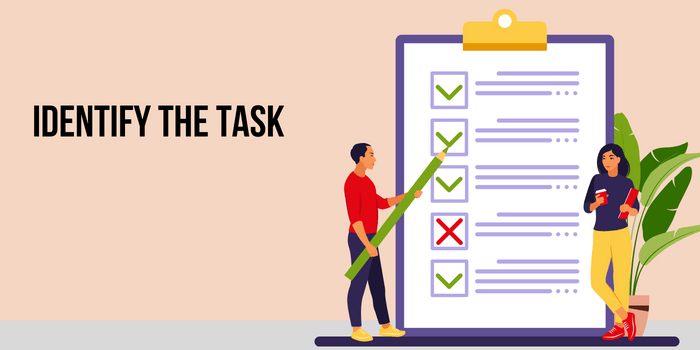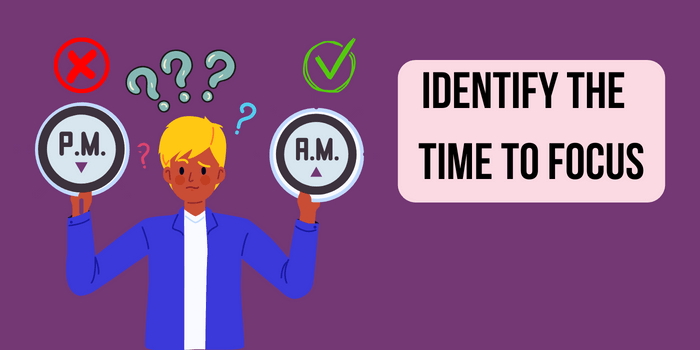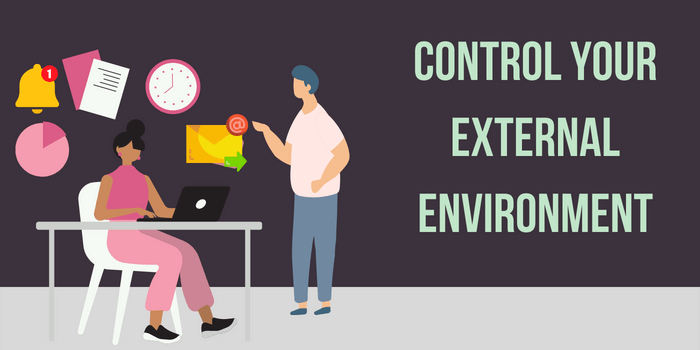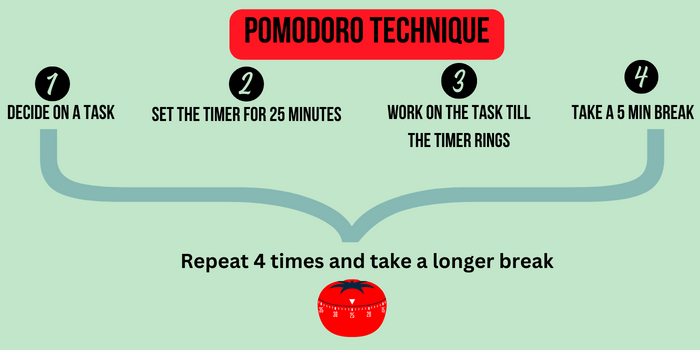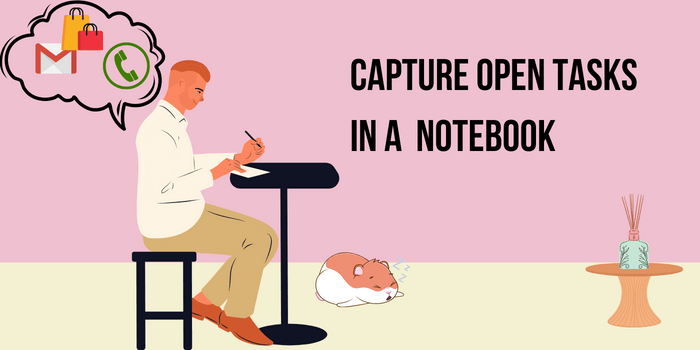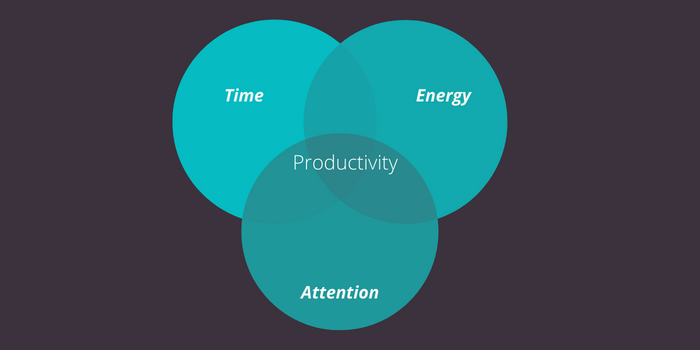Earlier, I talked about how time management is a poor tool to deal with a workday that is spiraling out of control.
You start each day planning to get multiple tasks done, but soon find yourself distracted by Zoom calls and meetings.
Regaining control of your day simply cannot be done using old one-size-fits-all time management techniques. A sharper approach is to control your attention, rather than time.
Attention management is about building the ability to consciously direct your attention to a well-selected task, and stay focused on that task without inadvertently getting distracted by something else.
I will now suggest a few attention management techniques which you can adapt to your working style and personality.
This is a long article with plenty of actionable suggestions. So strap in!
Before you start implementing these techniques, familiarize yourself with the key concepts of human attention so you know why we’re doing what we’re doing.
Identify what you want to focus on
The first step in managing your attention is to wisely choose what task deserves your attention.
Task prioritization often gets a bad rap because we feel that every single task that we need to do today is important. Simply changing the order of a few tasks isn’t going to help much.
Prioritization is still an important concept in productivity. But the trick is to prioritize at a higher strategic level, rather than the lower level of daily tasks.
When you start prioritizing this way, you will find that many tasks do not even make it to your daily to-dos, and you will be able to focus your attention on truly important items that move the needle.
Warren Buffett’s 2-list strategy
There is a story that often gets told about how Warren Buffett advised his pilot on how to identify what goals he should focus on.
The strategy is straightforward:
- Write down the top 25 goals on a piece of paper
- Circle the top 5
- Put the top 5 in your Do list, and the other 20 in the Avoid list
The moral of the story is that there will always be things that are good enough or interesting enough, but you simply should not spend any time on.
Internalize the idea that you will have to let go of some interesting tasks so you have the energy and time to devote to the critical ones.
Your attention is a valuable resource. When you focus on something, you incur an opportunity cost. You could have focused on something else at that time.
The trick is to minimize the opportunity cost by recognizing that you cannot do everything. So choose only the most important goals that deserve your attention.
Then derive tasks based on these goals and put those into your schedule.
Identify the best time to focus
Once you have a fair idea of what to focus on, the next step is to figure out when you should focus on which task.
Brian Tracy popularized the concept of Eat That Frog, which basically means that you should tackle your most important task first thing in the morning.
While I personally think this is a sound way to pick the task and the time together, I’m also aware that this may not be the best approach for all.
Maybe you don’t feel productive or energized in the morning. Maybe your schedule is not completely under your control and your mornings are eaten up by team calls.
Biological prime time
The phrase biological prime time was coined by Sam Carpenter, in his book, Work the System.
The idea is that there are certain periods of time in a day when you feel most focused and energized. For example, you may feel highly refreshed and clear in your head between 6 am and 9 am. This is your biological prime time when you’re likely to be able to accomplish the most.
Our brains and bodies cycle through ultradian rhythms where we experience peaks and drops in our energy levels. We usually work through these drops relying on coffee or sheer adrenaline, instead of just taking it easy. We become stressed and jittery, and our productivity plummets.
Instead, decide to do tasks that require high levels of concentration during peaks, and other low energy small tasks can be done the rest of the time.
To identify your biological prime time, log your energy levels every day for a week or so. With a week’s data you should be able to see a pattern. Else, do trial and error for a few days and see which time slots work for you for high focus tasks.
I’d also highly recommend blocking out these slots so it can become a part of your daily routine.
Our Deep Work & Flow bootcamp sessions are from 7 AM – 9 AM, and 10 AM – 12 noon. These slots are typically OK for many people to do focused work.
Scheduling focused work slots during the afternoon is not a great idea because of the post-lunch afternoon slump.
Author Dan Pink says that we go through a peak, trough, and a recovery mode in a day – typically the morning peak, afternoon slump, and an evening rebound.
So mornings and evenings may be good to schedule important tasks that require deep focus.
Control your external environment
Attention management is deliberately choosing what you put your attention into. Building this skill means fighting distractions, creating a focus friendly environment, and making opportunities throughout the day to support your daily priorities.
Before you sit down to immerse yourself in the task, control your work environment that has the capacity to disrupt your attention. Here are some tips to create a distraction free environment.
Technology
Technological distractions are an obvious problem.
Take control of devices by turning off all notifications from your mobile phone and laptop, and putting your phone away and out of reach. Slack and email notifications, phone calls, and other pings and buzzes from your devices are all engineered specifically to steal your attention. So you must fight back consciously.
This simple step will allow you to sustain your attention longer on tasks that you choose. If you need to check your phone in between, do that during prescheduled short breaks. If you’re worried about some emergency in the family, ask them to call the front desk in your office.
HabitStrong Deep Work & Flow bootcamp helps you practise these rituals and build the habit of immersing yourself in deep focused work. Participants report huge benefits and tangible results from these deep work sessions.
People
Distractions happen when colleagues (or family members if you work from home) drop in for a chat or a quick question.
You will need to figure out a way to signal to others about your focus bubble. You may inform your colleagues in advance that you will be unavailable from 10-12, for example. Put on your noise-cancelling headphones or put up a do not disturb sign if possible. You could even move to a quiet place of the office that has less footfall.
Don’t worry that you will come across as high and mighty when you make this request. Chances are, your colleagues are equally frustrated with distractions and may heartily support or even team up with you for focused work. I’ve found that asking nicely with a lot of respect works wonders for any request.
We unfortunately live in a world that has evolved for always-on collaboration which gives the illusion of speed, but in reality wears everyone out. Organizations must move to asynchronous collaboration options to solve this problem.
People have started realizing this now, but we cannot wait for the whole world to change. Change is beginning to happen, but in the meantime, let us fight back in ways that we can.
Controlling your internal environment
Controlling your external environment is a start, but to take attention management skills to the next level, you must learn how to control internal distractions from your own mind and entrenched behaviours.
Productivity suffers not just because we’re interrupted by technology or people, but also because of our own frazzled brains trying to keep up with the chaotic workplace.
When you are mentally attuned to answering every email from your boss within a minute, you’re primed to check your inbox frequently. This chips away at your attention and mental energy.
You have also trained yourself to instantly google the answer for every random thought that crosses your mind, often with elaborate excuses for the behaviour. Can it not wait for another hour?
There are many habits we need to retain ourselves out of.
Habits
When you start cutting down on distractions, initially you may feel jittery and uncomfortable because your brain is used to functioning in the constant distraction mode. But you can reclaim your focus and rebuild your attention span through these productive habits.
- Pomodoro technique
The pomodoro technique uses a timer to break down work into intervals, 25 minutes or 50 minutes in length, separated by breaks of 5 minutes or 10 minutes. These intervals are known as “pomodoros”.
Decide on a task, set the timer for 25 minutes, work on the task till the timer rings, then take a short break. After four pomodoros, you would take a longer break.
This technique is excellent for retraining your brain for extended periods of focus. Work on just one specific task, without any distractions during this period of time.
- Meditation
If you have any familiarity with HabitStrong, you know that we’re huge fans of meditation.
This is the single best technique to train your mind to develop attention.
I have written a whole article about how to use meditation to build your focus muscle. Check it out.
The more you practise meditation, the more you become aware of mental phenomena as they arise, which in turn strengthens your self-regulation and control, resulting in improved focus.
- Digital detox
This is another big one. Our smartphones have turned us into neurotic monkeys jumping and twitching at each notification.
Start weaning yourself off by spending some time every week away from technology. Every Sunday, take a full break from technology. Go outside, watch a movie and have lunch with friends, read a book, spend time in nature…
You may feel terribly uncomfortable at first, but after a while it will set you free.
The point is not to shun technology, but to find an optimal balance.
Our Undistractable — Digital Detox bootcamp helps you build a mature healthy relationship with technology in 4 weeks.
Process
When you set aside all distractions and start to work with focus, a niggling thought pops up into your head.
I am yet to start on my sales presentation for next week.
I need to get groceries.
I haven’t talked to the boss about my offsite training yet.
To prevent such thoughts from derailing your focus, you need to get your workflow or process in place.
- Brain dump or capture list:
Due to a phenomenon called the Zeigarnik effect, our brains hold on to incomplete tasks. These tasks then create open loops in our mind and consume significant mental energy.
Luckily, there is an easy way to close the open loops that pop into your head during focused work. Instead of relying on your memory to hold on to the open task, note it down on a piece of paper or notebook which you use specifically to capture these thoughts.
This brain dump will declutter your mind and trick your brain into closing the loop. The task is safely captured; you don’t need to struggle to remember it.
After your focused work session, you can attend to these tasks.
- Plan and schedule
Attention management is a small part of your overall productivity system.
Spend some time to also block time for tasks that you have to complete. Spend maybe an hour every Sunday evening for weekly planning.
Prepare the week’s schedule with a flexible mindset, so you’re not wedded to a rigid plan that can drive up the stress levels.
The intent here is to have a plan that helps put a mental boundary around all tasks you need to complete, not to collect points for following a strict and inflexible timetable.
- Seek out rich experiences
Immersing yourself into deep work has a pleasurable side effect of getting into the flow state. You will lose yourself in the activity and hardly notice the time pass by.
Apart from this enriching experience, also seek out other activities that have more depth and meaning rather than the usual peripheral consumption we engage in.
We have become an impatient society that demands maximum pleasure in minimum time (cue 10 second Tik Tok videos that keep us scrolling). We want nano-courses, we want 2 sentence summaries that convey all relevant information, we consume headlines instead of the whole story.
When you stay at this surface level, you miss out on the opportunity to build deep expertise and enriching experiences that set you apart from others and give you an edge.
Retrain your mind to embrace a new way of thinking by deliberately seeking out in-depth experiences. Commit to a new course, read books, choose longform articles, listen intently when spending time with friends and family.
All of these are positive feedback loops that add back and improve all aspects of your life, including productivity.
Go easy, your brain can only do so much
As helpful as focus is, overdoing it is not a good idea.
A 2019 study on dieters showed that effortful self-control can exhaust your brain circuits and impair subsequent self-regulation. Such ego depletion happens whenever we draw from our limited reserves of willpower.
Deliberate sustained attention, without giving in to a hundred other temptations, does involve tapping into our limited stores of self-control.
The energy drain can then lead to us overcompensating by bingeing on Netflix. Not a good idea!
So what do we do then?
Along with periods of deep focus, we must also allot time to defocus. Studies have shown that daydreaming refreshes the mind and is positively correlated to creativity.
Don’t make the mistake of thinking that all forms of mind wandering and daydreaming are bad.
Give your brain time to recover from the exhaustive mode of attention control. We need a balance of focus and defocus to perform at our optimal capacity, and to flourish.
Combine focus bursts with positive constructive daydreaming
Work in intense focused bursts during your biological prime time, or whenever you have time-blocked for deep work. After a while, you will see diminishing returns set in.
Then make time to rest your brain through positive constructive daydreaming (PCD), which is related to playful imagery and creative thought. This is not the guilty-dysphoric daydreaming associated with anxiety, guilt etc.
In the HBR Emotional Intelligence Series, psychiatrist and brain researcher, Srini Pillay, suggests deliberately building PCD into your day to boost creativity and refresh your brain.
To activate this mode, he recommends doing some low-key activity that is conducive to mind wandering. E.g., gardening, walking, casual reading, knitting.
Imagine something pleasant like walking through a field of flowers, or lying on the terrace watching the stars. Now with this mental image in the back of your mind, continue the low-key activity. This can keep you in a positive frame of mind and prevent slipping into negative mind wandering.
Resist the temptation to pick up mediocre substitutes like social media that might give us a break, but does not allow for truly refreshing mind wandering.
Pillay also suggests taking a nap to rest the brain. And if you’re stuck creatively, pretending to be an eccentric poet can help you break out of the deadlock.
These are all ways to give your brain a much-deserved break.
Productivity = Time + Energy + Attention
Chris Bailey, author of The Productivity Project, describes it best. Productivity is the harmonious balance of 3 ingredients:
- Time
- Energy
- Attention
If you are a knowledge worker, productivity is about how much you accomplish, rather than about simply maximizing your efficiency. This requires smart time management, energy management, and attention management.
Spend your time wisely. Bring deep focus and attention to what you’re doing. Manage your energy by giving yourself refreshing breaks.
I hope I have given you some ideas to manage all 3 aspects to work deliberately and intentionally, and make consistent progress towards your goals.

